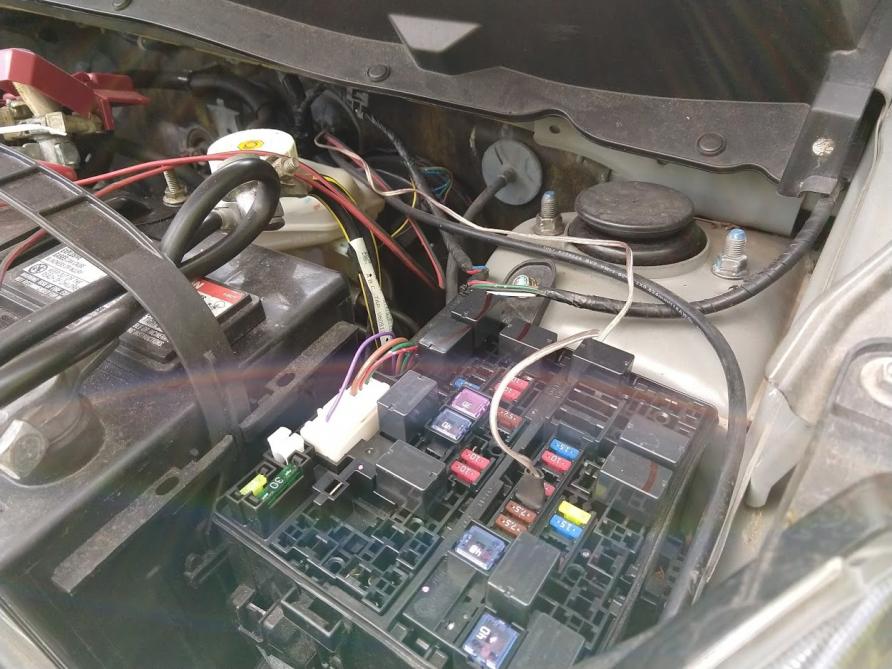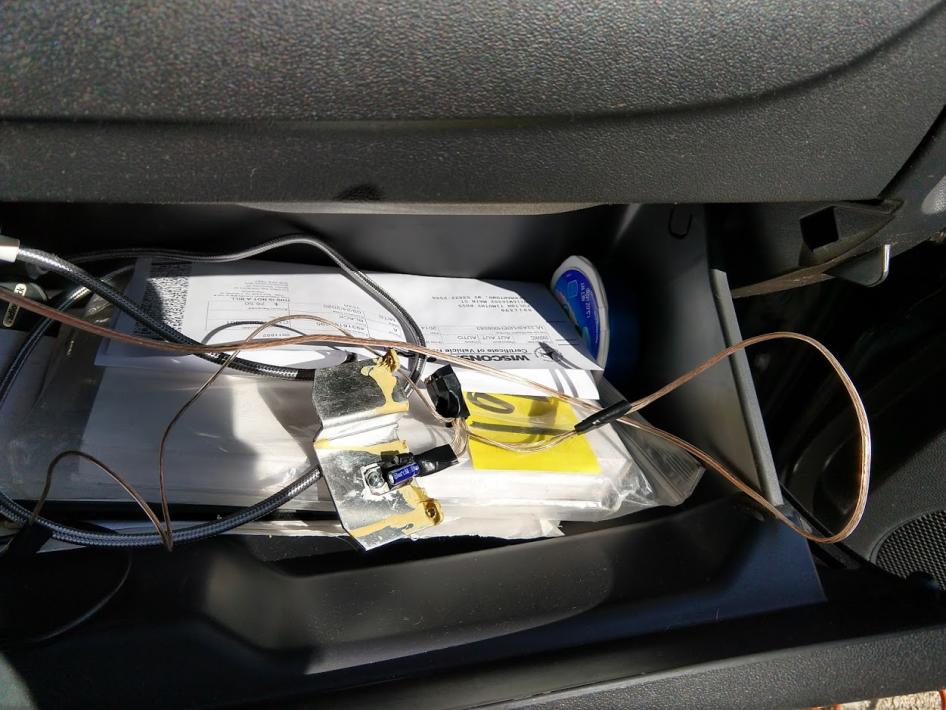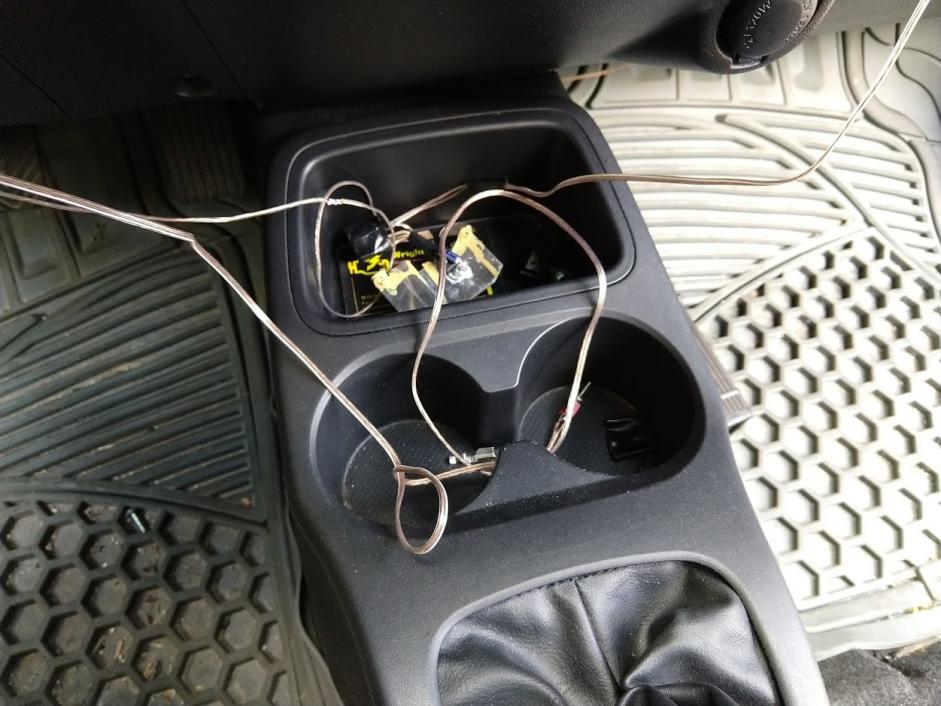 08-22-2019, 08:22 PM
08-22-2019, 08:22 PM
|
#11 (permalink)
|
|
Master EcoModder
Join Date: Jan 2012
Location: United States
Posts: 1,756
Thanks: 104
Thanked 407 Times in 312 Posts
|
Quote:
Originally Posted by mpg_numbers_guy

Someone I know "overclocked" their alternator with a different pulley size. Might be consideration if you don't plan on using the alternator for normal driving. I surmise there would be a definite amount of additional load from doing that, but you might be able to get a bit more "regen".
|
No, NO, NO.
Spinning the alternator faster pretty much only produces more losses after a few thousand rpm. They're usually spinning at >2x crank speed, so you'll have most of it by 2000rpm at the engine. The limiting factor is the current capacity of the stator winding.
You can only increase output by increasing voltage or putting in a bigger alternator. With increased voltage you will need more rpm to let the alternator reach that voltage if the field coil is current limited.
The alternator will need to be run more than just when you brake unless you have a really huge battery that's being charged at home and depleted as you drive.
If it were me, I'd use about 30Ah @ 24V lithium titanate oxide batteries (~$500), a 24V regulator from a tractor alternator, and DC-DC converter (~$70), and a switch to cut the alternator out above a certain % throttle input (if the engine is at low load you might as well run the alt).
Using LiFePO4 is more troublesome since you'll need a lot more of them in parallel to accept a fast charge, like 70Ah worth (assuming 100A alternator - 30A ignition/ECU/fuel pump/lights) which gets quite pricey and bulky.
Last edited by serialk11r; 08-22-2019 at 08:40 PM..
|
|
|

|
|
The Following User Says Thank You to serialk11r For This Useful Post:
|
|
 Today Today
|
|
|
|
 Other popular topics in this forum...
Other popular topics in this forum...
|
|
|
|
 08-22-2019, 10:15 PM
08-22-2019, 10:15 PM
|
#12 (permalink)
|
|
Master EcoModder
Join Date: Feb 2018
Location: VA
Posts: 1,372
Thanks: 324
Thanked 483 Times in 368 Posts
|
Yes, it mostly does just produce extra losses at higher RPM, but more power is available at lower RPM than otherwise, and for max regen braking you'd want to keep it in the highest gear possible down to 1000 RPM to avoid engine friction when slowing down. As I said this would be counterproductive if the alternator was going to be used normally, but if it's just going to be used for regen as the OP seemed to indicate, then it might be worth checking out at least.
Why 24V? The car runs on 12V....15V max if you want to keep things fully charged.
Cost is also a factor - $570 is a decent chunk of change. Once you start getting up there in price you might as well have a hybrid that has full regenerative braking and whatnot. Part of the economy of not having a hybrid is to avoid having expensive batteries in the car, whether those are HV batteries or expensive lithium 12v batteries.
__________________
2013 Toyota Prius C 2 (my car)

2015 Mazda 3 iTouring Hatchback w/ Tech Package (wife's car)

|
|
|

|
 08-22-2019, 10:35 PM
08-22-2019, 10:35 PM
|
#13 (permalink)
|
|
Master EcoModder
Join Date: May 2019
Location: California
Posts: 513
2020 - '08 Chevy Tahoe H Last 3: 18.4 mpg (US) 2021 - '08 Chevy Tahoe H 90 day: 17.08 mpg (US) 2022 - '08 chevy Tahoe LT Last 3: 14.38 mpg (US) 2023 - '08 Chevy Tahoe Last 3: 22.61 mpg (US) 2024 - '08 Chevy Tahoe 90 day: 22.35 mpg (US)
Thanks: 2
Thanked 105 Times in 96 Posts
|
Quote:
Originally Posted by mpg_numbers_guy

I've strongly considered doing something like this on my Insight, as I've seen about a 10%/10mpg improvement with my Meanwell pseudo-alternator turned off. Problem seems to be that the 12V battery can't hold any significant amount of regen, so one would need to drag the brakes for a long time to get ant usable regen - one couldn't just tap the brake once and throw in as many amps as would be necessary to charge the battery. I also rarely brake, so my braking isn't more than a quick tap every now and then anyway.
Supercapacitors sound like a possible solution, but I am not knowledgeable enough on them to know how they would work in a situation like this. If supercapacitors would work, and actual regen could be used to the 12V battery, that in combination with a small solar charging setup might be able to eliminate alternator need except on highway trips. The real goal would be to eliminate having to plug in the 12V battery at night, since saving fuel cost at the expense of additional electrical cost isn't a money savings.
What deep cycle battery did you go with?
|
super capacitors can take a charge almost instantly |
|
|

|
 08-22-2019, 10:48 PM
08-22-2019, 10:48 PM
|
#14 (permalink)
|
|
Master EcoModder
Join Date: Jan 2012
Location: United States
Posts: 1,756
Thanks: 104
Thanked 407 Times in 312 Posts
|
Quote:
Originally Posted by mpg_numbers_guy

Yes, it mostly does just produce extra losses at higher RPM, but more power is available at lower RPM than otherwise, and for max regen braking you'd want to keep it in the highest gear possible down to 1000 RPM to avoid engine friction when slowing down. As I said this would be counterproductive if the alternator was going to be used normally, but if it's just going to be used for regen as the OP seemed to indicate, then it might be worth checking out at least.
Why 24V? The car runs on 12V....15V max if you want to keep things fully charged.
Cost is also a factor - $570 is a decent chunk of change. Once you start getting up there in price you might as well have a hybrid that has full regenerative braking and whatnot. Part of the economy of not having a hybrid is to avoid having expensive batteries in the car, whether those are HV batteries or expensive lithium 12v batteries.
|
A custom pulley is going to be a good chunk of change too, and the diameter on the alternator pulley is already small. Spinning the alternator faster for a tiny bit more regen doesn't sound like it's going to end up very economical to me if you end up having belt slip issues. Also the belt efficiency will drop, and the alternator fan will produce more losses.
24V because it instantly doubles the power output from the alternator. I'm not sure if stock rotor field windings can handle double the field current, but if they can there's no issue at all. If they can't, you might need to downshift one gear to get the best out of the alternator (you'd be increasing the regen to engine braking ratio anyways so it's fine).
Of course you can get away with less than 500 on the battery too, 30Ah is pretty generous. 20Ah would probably be totally fine, since not all the alternator current is going to the battery. It depends how often you want to cut the alternator and how long you want the battery to last.
Ultracapacitors to absorb the charge would let you use 12V LiFePO4 batteries to exclusively power the car, but the ultracapacitors also cost money, and you still need a DC-DC converter.
Obviously the cheapest solution is to just use the stock alternator with a 12V battery, but that barely saves any fuel.
Last edited by serialk11r; 08-22-2019 at 10:53 PM..
|
|
|

|
 08-23-2019, 07:51 AM
08-23-2019, 07:51 AM
|
#15 (permalink)
|
|
Master EcoModder
Join Date: Feb 2018
Location: VA
Posts: 1,372
Thanks: 324
Thanked 483 Times in 368 Posts
|
It depends on how much you want to spend. On longer trips an alternator delete would get expensive quickly, and once the alternator has charged the battery to full, alternator load is pretty light. An alternator delete would have the most effect on shorter (<1 hour) drives.
My plan (down the road once my current one year old 12v dies) is to have two 20ah deep cycle batteries in parallel with a couple 25w solar panels wired up in parallel to keep them topped off, and a kill switch to manually control my alternator - which is really quite easy with how my Meanwell is setup. Estimated cost is $80-$100 for the batteries, and maybe another $100 for the solar.
__________________
2013 Toyota Prius C 2 (my car)

2015 Mazda 3 iTouring Hatchback w/ Tech Package (wife's car)

|
|
|

|
 08-24-2019, 08:46 AM
08-24-2019, 08:46 AM
|
#16 (permalink)
|
|
Administrator
Join Date: Dec 2007
Location: Germantown, WI
Posts: 11,203
Thanks: 2,501
Thanked 2,589 Times in 1,555 Posts
|
All great ideas guys. Keep them coming! The more ideas we lay out the better chance we have of coming up with another great idea.
I just finished ordering a fancy ammeter for the Mirage. I was just going to use an analog meter with a shunt. But, the more I looked around, the more I found cool nerdy stuff that would just be nice and the price was quite reasonable. So, I ended up going with an ammeter that also measures voltage and amp hours used. You can also set a capacity, and it has a pretty battery gauge on it. This gauge should much better show just how much power I am able to regenerate with my regen braking setup.  DC Multifunction Battery Monitor Meter
DC Multifunction Battery Monitor Meter
 |
|
|

|
 08-24-2019, 10:22 AM
08-24-2019, 10:22 AM
|
#17 (permalink)
|
|
Somewhat crazed
Join Date: Sep 2013
Location: 1826 miles WSW of Normal
Posts: 4,564
Thanks: 596
Thanked 1,253 Times in 1,105 Posts
|
Be advised that much of that fancy pretty interweb stuff is inaccurate as heck. I have had some in the ranger, and only the voltage was close according to my 1950's test equipment.
__________________
casual notes from the underground:There are some "experts" out there that in reality don't have a clue as to what they are doing.
|
|
|

|
|
The Following User Says Thank You to Piotrsko For This Useful Post:
|
|
 08-28-2019, 12:18 PM
08-28-2019, 12:18 PM
|
#18 (permalink)
|
|
Administrator
Join Date: Dec 2007
Location: Germantown, WI
Posts: 11,203
Thanks: 2,501
Thanked 2,589 Times in 1,555 Posts
|
I'll check the digital fancy gizmo with my analog ammeter to see that its at least roughly the same. Beyond that, I'm not sure how I would go about testing it.
|
|
|

|
 08-28-2019, 10:55 PM
08-28-2019, 10:55 PM
|
#19 (permalink)
|
|
Administrator
Join Date: Dec 2007
Location: Germantown, WI
Posts: 11,203
Thanks: 2,501
Thanked 2,589 Times in 1,555 Posts
|
I moved the circuit into the cabin today. This should have been a short ordeal, but it really wasn't. For the life of me, I could not find an easy and quick ground for this circuit. I finally ended up finding a unused hole on the steering column and bolted the wire to it.
While I was moving the circuit into the cabin, I also added a toggle switch to it. Now I can turn my alternator on and off at will. I tested it and it works great!
Here are some pictures of the process.
The fuse wire now runs through the firewall into the cabin.

I stuffed the circuit in the glove box for the time being. I'll tidy it up after its all in there and working.

Then, I had a heck of a time finding a ground... I really don't know what else to say. This really shouldn't be a hard thing to do, but it seemed to take me for forever.
The switch is currently just on a wire and I have to grab it and flick it on. I tried it on a quick drive tonight and it works beautifully. I will be adding the amp hour meter once I get it. But, in the mean time I think I'll hookup a 200A ammeter that I have kicking around. That should show me roughly how much power I'm getting with the regenerative braking.
 |
|
|

|
|
The Following User Says Thank You to Daox For This Useful Post:
|
|
 08-28-2019, 11:00 PM
08-28-2019, 11:00 PM
|
#20 (permalink)
|
|
Master EcoModder
Join Date: Feb 2018
Location: VA
Posts: 1,372
Thanks: 324
Thanked 483 Times in 368 Posts
|
Interesting! I never noticed that the Scangauge gives inaccurate 12V battery voltage readings. I wonder if a cigarette lighter plug would work, of if you'd actually have to have a multimeter hooked up to read actual voltage. Looking good so far, definitely interested in seeing how much energy you can capture through braking. Have you hooked up your Amazon meter yet?
__________________
2013 Toyota Prius C 2 (my car)

2015 Mazda 3 iTouring Hatchback w/ Tech Package (wife's car)

|
|
|

|
|